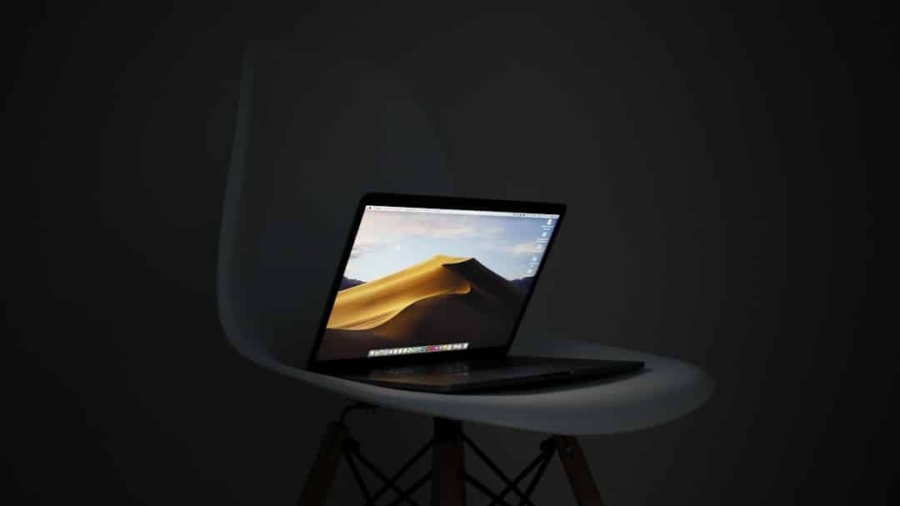Lenovo has long been a pioneer in the realm of personal computing, consistently pushing the boundaries of technology and design. With the introduction of its new foldable laptop, the company is once again at the forefront of innovation. This device represents a significant leap forward in the evolution of laptops, merging the portability of tablets with the functionality of traditional laptops.
The foldable laptop is not merely a novelty; it embodies a vision for the future of computing, where flexibility and adaptability are paramount. As remote work and mobile computing become increasingly prevalent, Lenovo’s foldable laptop aims to meet the demands of modern users who require versatility without sacrificing performance.
By incorporating a flexible display that can be adjusted to various configurations, Lenovo is addressing the need for devices that can seamlessly transition between different modes of use. This innovation is not just about aesthetics; it reflects a deeper understanding of how people interact with technology in their daily lives. As we delve into the specifics of this groundbreaking device, it becomes clear that Lenovo’s foldable laptop is poised to redefine what we expect from our computing devices.
Key Takeaways
- Lenovo has introduced a new foldable laptop that aims to revolutionize the way we work and interact with technology.
- The foldable laptop features a sleek and innovative design, with a flexible display and versatile modes for different tasks.
- Users can benefit from increased productivity with the ability to multitask and seamlessly transition between different applications and tasks.
- However, potential drawbacks include durability concerns and the need for optimized software and apps to fully utilize the foldable laptop’s capabilities.
- When compared to traditional laptops, the foldable laptop offers a unique and futuristic approach to computing, but user feedback and reviews are mixed regarding its practicality and usefulness.
- The future of foldable laptops in the tech industry remains uncertain, with potential for further advancements and improvements in design and functionality.
- In conclusion, while Lenovo’s foldable laptop offers innovative potential, its true value as a productivity tool versus a gimmick is still up for debate.
The Design and Features of the Foldable Laptop
Design and Display
At first glance, the laptop captivates with its sleek and modern design. The high-resolution OLED display offers vibrant colors and deep contrasts, making it ideal for both work and entertainment. The screen’s ability to fold in half allows for a compact form factor that can easily fit into a backpack or briefcase, enhancing portability without compromising on screen real estate.
Performance and Features
When unfolded, users are greeted with an expansive display that provides ample space for multitasking. The device is equipped with a powerful processor and ample RAM, ensuring that it can handle demanding tasks with ease. Additionally, it boasts a long-lasting battery life, which is crucial for users who are often on the go.
Furthermore, Lenovo has included advanced connectivity options, such as Thunderbolt 4 ports and Wi-Fi 6 support, allowing for fast data transfer and seamless connections to external devices. These features collectively enhance the user experience, making the foldable laptop not just a stylish gadget but a practical tool for productivity.
Productivity Benefits of a Foldable Laptop

The productivity benefits of Lenovo’s foldable laptop are manifold, particularly in an era where flexibility and efficiency are paramount. One of the most significant advantages is its ability to adapt to various work environments and styles. For instance, when folded into a tent mode, the device can serve as a collaborative tool during meetings, allowing multiple users to view content simultaneously without crowding around a single screen.
This feature is particularly beneficial in hybrid work settings where collaboration often occurs in informal spaces rather than traditional conference rooms. Moreover, the expansive display allows for enhanced multitasking capabilities. Users can run multiple applications side by side, which is invaluable for professionals who need to reference documents while drafting emails or conducting research.
The ability to split the screen into different sections means that users can maintain focus without constantly switching between tabs or windows. This streamlined workflow can lead to increased efficiency and reduced cognitive load, ultimately enhancing productivity. Additionally, creative professionals can take advantage of the foldable design by using stylus input for drawing or note-taking directly on the screen, further blurring the lines between traditional computing and creative expression.
Potential Drawbacks and Limitations
Despite its many advantages, Lenovo’s foldable laptop is not without its drawbacks and limitations. One primary concern revolves around durability. The hinge mechanism that allows the device to fold is a critical component; however, it also introduces potential points of failure over time.
Users may worry about wear and tear on the folding screen, especially if they frequently switch between modes. While Lenovo has implemented robust engineering solutions to mitigate these concerns, the long-term reliability of foldable displays remains an open question in the tech community. Another limitation is related to software optimization.
While many applications are designed to work seamlessly on traditional laptops, not all software has been optimized for foldable displays. This can lead to issues such as scaling problems or awkward user interfaces when applications are run in different orientations. Additionally, some users may find the keyboard experience less satisfying compared to traditional laptops, particularly if they are accustomed to tactile feedback from physical keys.
Although Lenovo has made strides in creating a responsive typing experience, it may not fully satisfy those who prioritize traditional keyboard layouts.
Comparing the Foldable Laptop to Traditional Laptops
When comparing Lenovo’s foldable laptop to traditional laptops, several key differences emerge that highlight the unique advantages and challenges posed by this innovative design. Traditional laptops typically offer robust performance and reliability, with established form factors that have been refined over decades. They often come equipped with powerful hardware configurations tailored for specific use cases, such as gaming or graphic design.
In contrast, while Lenovo’s foldable laptop also boasts impressive specifications, its primary selling point lies in its versatility and adaptability rather than raw power alone. Another notable difference is in user experience. Traditional laptops provide a consistent interface that users have come to expect; they feature fixed screens and keyboards that allow for predictable interactions.
On the other hand, Lenovo’s foldable laptop introduces a dynamic interface that can change based on how the user chooses to engage with it. This flexibility can be both an advantage and a challenge; while it allows for creative workflows and new ways of interacting with content, it may also require users to adjust their habits and workflows to fully leverage its capabilities.
User Reviews and Feedback

Innovative Design and Versatility
Early adopters have praised the laptop’s innovative design and versatility, noting how easily it transitions between different modes of use. Many users appreciate the large display size when unfolded, which enhances their ability to multitask effectively.
Benefits for Creative Professionals
Creative professionals have particularly highlighted the benefits of using stylus input for drawing and note-taking directly on the screen, finding it an invaluable tool for their workflows.
Challenges and Areas for Improvement
However, some users have expressed concerns regarding the learning curve associated with adapting to a foldable interface. While many appreciate the novelty of the design, others have reported challenges in adjusting their workflows to accommodate the unique features of the device. Additionally, feedback regarding battery life has been mixed; while some users find it sufficient for their needs, others have noted that heavy usage can drain the battery more quickly than expected. These insights provide valuable context for potential buyers considering whether this innovative device aligns with their specific needs and preferences.
The Future of Foldable Laptops in the Tech Industry
The introduction of Lenovo’s foldable laptop marks a significant moment in the evolution of personal computing devices, but it also raises questions about the future trajectory of this technology within the broader tech industry. As manufacturers continue to explore foldable designs across various categories—from smartphones to tablets—the potential for innovation appears limitless. Companies are likely to invest further in research and development aimed at improving durability and software optimization for foldable devices, addressing some of the concerns raised by early adopters.
Moreover, as consumer preferences shift towards more versatile devices that can adapt to different use cases, we may see an increase in demand for foldable laptops in both professional and personal contexts. The success of Lenovo’s offering could inspire competitors to enter this space with their own unique takes on foldable technology, leading to a diverse range of products that cater to various user needs. As this segment matures, we may witness advancements in materials science that enhance screen durability while maintaining flexibility—potentially paving the way for even more innovative designs in the years to come.
Is Lenovo’s Foldable Laptop a Productivity Tool or Gimmick?
In evaluating whether Lenovo’s foldable laptop serves as a genuine productivity tool or merely a gimmick, it becomes evident that its value largely depends on individual user needs and preferences. For those who thrive on flexibility and require a device that can adapt to various tasks and environments, this innovative laptop offers compelling advantages that traditional laptops may struggle to match. Its ability to transform into different modes enhances collaboration and multitasking capabilities—qualities that are increasingly important in today’s fast-paced work environment.
However, potential buyers should also consider the limitations associated with this new technology. Concerns about durability and software optimization cannot be overlooked; they may impact long-term satisfaction with the device. Ultimately, whether Lenovo’s foldable laptop is seen as a revolutionary productivity tool or simply an intriguing novelty will depend on how well it meets user expectations in real-world applications.
As technology continues to evolve, so too will our understanding of what constitutes an effective computing device—making this an exciting time for both consumers and manufacturers alike.
Lenovo’s new foldable laptop has sparked a debate among tech enthusiasts – is it a productivity tool or just a gimmick? Some argue that the flexibility and portability of a foldable laptop can greatly enhance productivity, while others believe it may not offer any significant advantages over traditional laptops. For those interested in exploring the potential productivity benefits of new tech gadgets, a recent article on RankAtom Review: The Game-Changing Keyword Research Tool may provide some insights on how innovative tools can revolutionize workflow and efficiency.
FAQs
What is Lenovo’s new foldable laptop?
Lenovo’s new foldable laptop is a device that features a foldable screen, allowing it to be used in various configurations such as a traditional laptop, a tablet, or in a tent mode.
What are the potential benefits of a foldable laptop?
A foldable laptop offers the potential for increased portability and versatility, as it can be used in different modes to suit different tasks and environments. It also provides a larger screen size compared to traditional tablets when unfolded.
Is a foldable laptop considered a productivity tool or a gimmick?
The classification of a foldable laptop as a productivity tool or a gimmick is subjective and depends on individual user preferences and needs. Some users may find the versatility and portability of a foldable laptop to be beneficial for productivity, while others may view it as a novelty or gimmick.
What are the potential drawbacks of a foldable laptop?
Potential drawbacks of a foldable laptop include concerns about durability and the longevity of the foldable screen, as well as the potential for higher cost compared to traditional laptops or tablets.
Is Lenovo the only company producing foldable laptops?
No, Lenovo is not the only company producing foldable laptops. Other tech companies have also introduced or are developing foldable laptop designs, indicating a growing interest in this form factor within the industry.

